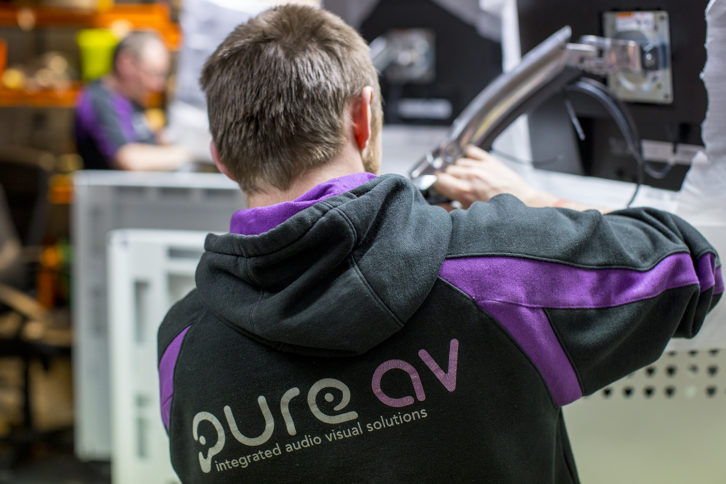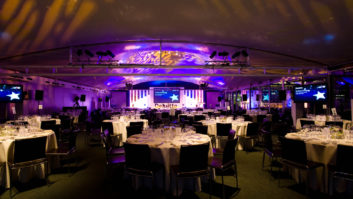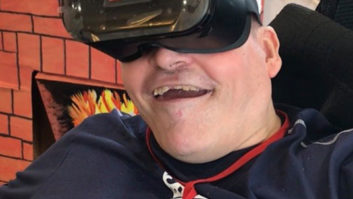
What do you hope to get out of events like commUniCate?
Events like commUniCate are a chance for our entire team to gain exposure to the latest ideas and solutions from our vendors; helping them to identify new ways to address the challenges and needs of our varied customer base. In the afternoon session, we bring together our customers so that they can engage directly with manufacturers and look at different ways to address the specific business communication issues they may have.
The exhibition format, mixed with keynote talks allows visitors to consider what they want to achieve as an organisation, engage in open dialogue with our staff, vendors and other clients to collect and garner a clear idea of the solutions the AV industry has to offer them. For us, it is also about being there at the start of the conversation, helping to spark the inspiration and shape the solutions rather than just getting involved in a pricing exercise at the end of the process.
In terms of the measurement of success, it is an educational event first and a sales event second. We have objectives to hit in terms of visitor numbers and new business opportunities, but client and vendor feedback is vital to us in determining how successful the event has been and importantly, gives us a base point for planning the next one. I’m delighted to say that the feedback received so far has been very complimentary from both suppliers and customers, with all looking forward to our next Tech Day in 2020.
Apart from the growth of the company, how else has the business changed over its 15 years? And how do you see it changing over the next 15 years?
Our marketplace has changed massively over the years. Our understanding of a client’s IT infrastructure is now vital in presenting the correct technology solutions to address a client’s needs, and in discerning the limitations of what can be achieved today.

The core disciplines that the four founding directors brought to the company remain critical; engineering, programming, design and business expertise and have deepened and expanded to enable the business to connect effectively with the broader ecosystem of modern-day project delivery. Whether engagement with IT and networking, consultants or business process experts; we have had to build into the business the capability to understand the new ways of working and capacity to deliver a technology solution to support it. Alongside this, our internal processes have changed, as you would expect with a growing business, and we have brought in new people and resources to strengthen our capabilities and the connections between our internal business functions.
In the market, the move to more fluid, agile work styles continues, changing the demands made on our workspaces and consequently those on the integrator. Historically clients met in a large room, presented or utilised a videoconferencing codec, but nowadays the meeting style is often less formal and generally briefer. The adoption of an agile methodology means that the spaces are more flexible, geared around a smaller workgroup and may have to accommodate the users own device for both presentation and VC uses. The future, certainly in the corporate sector, needs to invite and seamlessly blend the best user experience by utilising simpler and more reliable technology.
The future will also see the traditional AV company embracing new methodologies and skillsets aligned toward the IT sector as we deploy endpoints and meeting spaces while utilising the infrastructure and constraints of an organisation’s networks. If we look at the ‘touch-points’ a user has with technology throughout the day, it is clear that the connected world is becoming the norm, and this will only accelerate in the coming years. Our challenge is to recognise this, upskill where necessary and allow the user to engage with their audience in the most efficient manner possible. We need to keep a keen eye on the future, but also protect our key differentiators as experts in AV today.
What technologies are you particularly keen to see develop in that time?
A client wants to maximise their return on staff, and that means that the technology we use needs to be simple to use, but more importantly reliable in its use and free from errors to ensure productive meetings. Generation Z, and the yet to be confirmed successors, Generation Alpha, expect more from their technology and how it enables them to interact with the world around them. Systems need to bury their physical complexity and present the user with simple, intuitive interfaces that allow people to exchange ideas, communicate and distribute information with little concern from the user as to how the system works – much as a smartphone does today.
“We need to recognise that the future is changing and be prepared to adapt, upskill and embrace these new technologies”
Managed and scalable maintenance platforms such as Creston XiO cloud are helping us achieve this, but we are at the early stages of its uptake and its usability. Some, but not all, AV roll-outs will become commoditised, and solutions will become self-deploying endpoints such as when a new piece of equipment connects to the outside world and recognises what it is, its position in clients infrastructure and what its purpose is. It will set itself up and report back real-time on how and when it is being used, who and what is connecting to it and flag its status when issues occur. To some, this could seem like the death-knell for traditional AV companies, but we need to recognise that the future is changing and be prepared to adapt, upskill and embrace these new technologies.
How do you see the role of the integrator changing going forward?
AV integrators still have a place in the technology marketplace today and for the foreseeable future. Yes, we need to learn and adopt new skills, but that has always been the case when engaging with AV technologies. Our key differentiators are that of being able to flex our integration capabilities to scale from a single room experience to a multi-million-pound campus deployment.
We will always be the specialists in integrating AV technology because we understand not only what the user is trying to achieve, but also how to translate that into a simple user experience. We look at the acoustics, the physical space and understand how video and data need to be distributed and managed for a seamless experience. We will need to be closer to the client’s IT teams as we now share common communications platforms, and consequently, we will need to develop our understanding and fluency of these networks.
Flexible and varied vertical market engagement will also be central to future success. I believe that staying and servicing a limited number of verticals is limiting to the sustainability of an organisation. Markets and budgets fluctuate, and if traditional integrators stay core to a limited client base, they are less likely to spot new market opportunities and more vulnerable to adverse market changes. There is also an advantage to be gained for sales teams who are multi-skilled and able to engage with different client sets. The experience and learning gained within a global corporate, for example, may also be directly transferable to a University client, demonstrating both credibility and awareness of how and when to utilise tried and tested AV solutions.
Where are your greatest challenges and opportunities currently coming from?
One of the key challenges in our marketplace is the commodification of communication technology. Take Videoconferencing for example; previously we sold a codec, display medium, audio and video switching, amplification, speakers, maybe a control panel and associated programming to meet the needs of the customer, now this can be achieved, in a fast-changing workplace, by bolting a screen to a wall with a soundbar and unified communication device sitting on a table. Yes, more extensive meeting room solutions are also needed, but as we engage with new clients and a changing workplace, many of our previous skills are swept away to accommodate a more straightforward, and arguably, more efficient meeting environment.
Opportunities, though, are also there to be had. Engagement with new vertical markets brings challenges but gives you a wider audience who require a greater range of solutions from a single vendor. Take an enterprise-level customer; they will need meeting rooms, digital signage, maybe a boardroom or ‘town-hall’ meeting space. Add to that reception screens, wayfinding, background audio and a service contract to support its continued effectiveness. Now multiply that by, maybe, some other regional offices and possibly European or Global coverage, then at that stage the future becomes interesting. By keeping a clear eye on the customer, having confidence in the services that you offer, employing the best people that you can and delivering the best possible customer experience will ensure that AV Integrators have a place for the foreseeable future.







